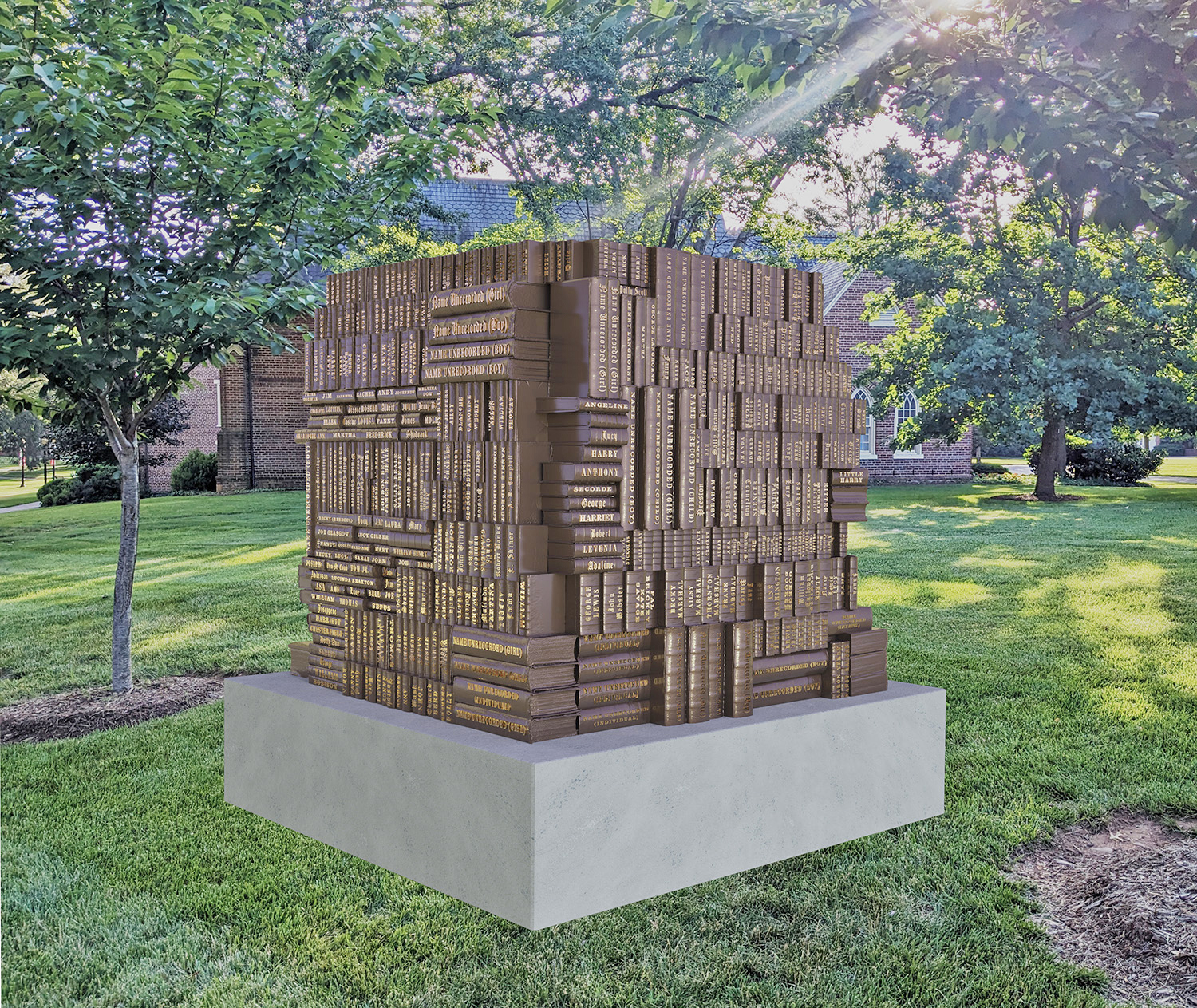

Artist Sandy Williams speaks at the unveiling of the memorial ‘Authors and Architects.’ The sculpture will be ready in the spring of 2025.
By Edmee CR Hasler
Roanoke College is embarking on a historic project to honor the names of enslaved individuals who shaped the college’s early history, with a memorial designed by artist Sandy Williams IV. The project, in the works for five years, is set to come to fruition next spring, marking a significant moment of reckoning for the institution.
“When President Maxey and later President Shushock asked me to coordinate this Memorial Project, I asked for three things,” said professor Jesse Bucher, who has been leading the effort. “First, that Roanoke College students be involved in every stage of the process. Second, that we place Roanoke College within a larger regional historical context. And third, that we have enough time to develop and complete a memorial that will be beautiful, intellectually rigorous, and able to engage the community.”
Bucher emphasized the importance of this project, noting, “Five years later, we are at the cusp of realizing these objectives.”
The project has involved extensive archival research by Roanoke students, including Sidney Penix, Jade Mooney, and Jasmine Mufatti. Since 2019, they have sifted through 19th-century records, identifying more than 4,000 enslaved individuals. Bucher detailed the challenging nature of the research, stating, “The records students transcribed refer to enslaved people exclusively as human property. Wills, property assessments, and birth records allowed enslavers to track, buy, and sell enslaved men, women, and children.”
Much of this research unearthed troubling connections between the college’s early leaders and the institution of slavery. “Founding members of the Board of Trustees, such as Michael Miller and John Trout, used their wealth and influence, derived from enslaved labor, to establish the college,” Bucher explained. Yet until now, none of the enslaved individuals were named anywhere on campus.
This is where Williams, an accomplished sculptor and professor at the University of Richmond, comes in. “I first met Sandy Williams at the end of 2022 when they began to develop a proposal for Roanoke College’s Memorial to Enslaved Laborers,” said Bucher. “Sandy’s concept for the memorial is detailed, rigorous, thoughtful, and beautiful.”
Williams shared their journey of creating the memorial, recalling how visiting Roanoke’s campus and studying local records inspired their design. “I think the thing that was most inspiring to me was the geology of the slave labor project,” Williams said. “I was struck by how unique this work is, and I wanted to honor the invisible presence of those who helped build this space.”
The memorial, titled Authors and Architects, will consist of approximately 1,000 bronze books, each representing an enslaved individual with connections to the college. “Often, we only remember them as ‘slaves,’ without crediting them as authors of the space,” Williams explained. “They were architects of the legacy we now enjoy and profit from.”
The sculpture will also include elements that reflect the gaps and absences in the historical record. “Some of the books will be turned around, their pages out, to represent the stories we’ll never know,” Williams said, acknowledging the challenge of memorializing lives that were systematically erased from history.
For students like Sidney Penix and Jade Mooney, the project has been deeply rewarding. Penix, who began working on the archival research in 2022, shared, “Reading through difficult history, especially as an African American, was challenging, but being able to educate others about it has been the best part. It’s very healing.”
Mooney, a history major, emphasized how this project has broadened her understanding of how history can be presented. “Seeing the names we’ve pieced together in the database and now on the memorial—like the Quayman family—it’s been incredible,” she said. “This memorial will make their stories even more visible.”
As Roanoke College prepares to install the memorial, Williams hopes it will not only honor the past but also provoke reflection and conversation. “Producing public art is not easy,” Williams said. “Artists have to balance the tensions between speaking to the present and standing in the future, creating work that is both beautiful and provocative. I believe this design achieves all of that and more.”
Ultimately, Williams views the memorial as a milestone, not a conclusion. “There’s still so much we don’t know, so much to recover,” Williams said. “This is a marker—a moment to celebrate the work that’s been done, but also to acknowledge there’s more ahead.”




